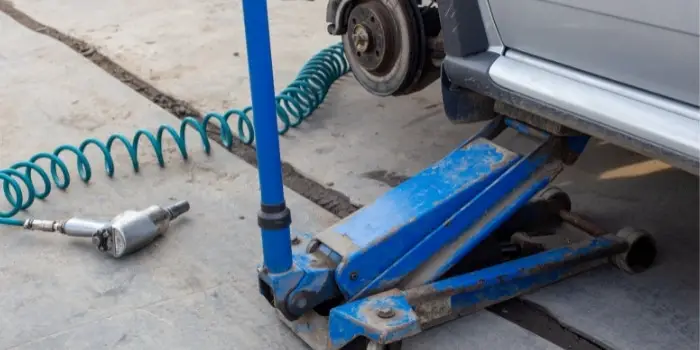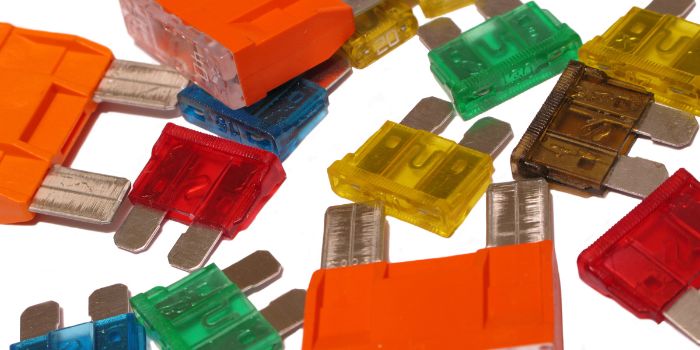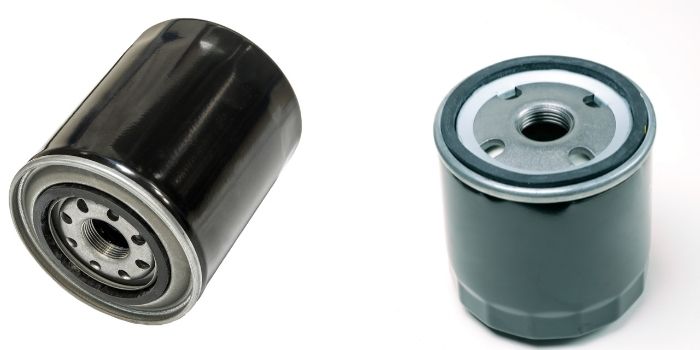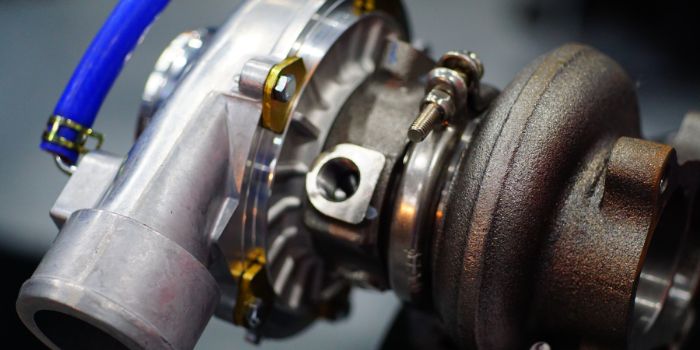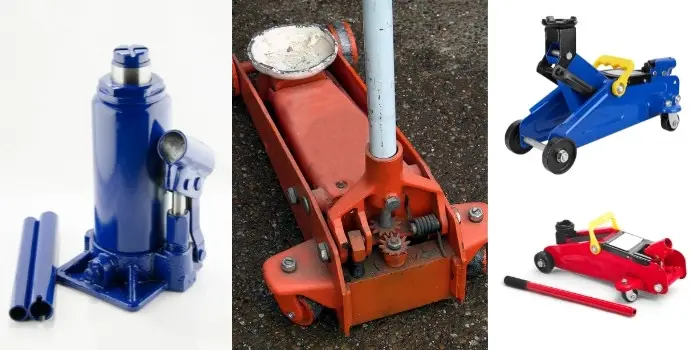
The hydraulic floor jack is a fantastic item to have since it readily lifts automobiles as if they were made of foam and enables you to securely check and repair a car.
A hydraulic floor jack may be quite useful in a variety of scenarios, such as changing a flat tire or tinkering with the vehicle’s underside.
However, floor jacks are not immune to issues and malfunctions, and they, too, must be repaired at times.
So, let’s look at the most frequent hydraulic floor jack issues and how to fix them, along with various troubleshooting tips.
Table of Contents
What is a hydraulic floor jack?
The hydraulic floor jack is a hydraulics tool with a saddle, rollers, and a hydraulic pump that can easily raise an entire car from the side and maintain it in the air while you crawl under it securely.
A well-functioning floor jack is both safe and simple to operate, and it may stay that way for years if properly maintained in line with the manufacturer’s requirements.
A decent floor jack will also contain several fail-safes so that if anything out of the usual happens, the car will not fall on top of you.
Nonetheless, hydraulic floor jacks are tools just like any other, and they may break if misused.
Knowing how to examine and maintain them, as well as execute hydraulic floor jack repair, is critical if you want to operate your floor jack without accident.
Hydraulic floor jack problems and their fixes
Problem #1: Jack doesn’t lift the weight
It means that the floor jack is not raising the car as it was designed to do, or that the jack is not retaining the pressure to raise the vehicle for changing a tire or doing anything else.
Solution
If the jack is not lifting weight, the underlying difficulties might be as follows.
Don’t overstress the jack
Make sure you’re not overloading the jack, which means you shouldn’t attempt to raise a car that weighs more than the jack’s capacity.
So, if your jack isn’t lifting the car, you should first check its capacity.
Check the hydraulic oil level
If your jack isn’t lifting weight, check the oil level since both a low level of oil or overfilling may cause damage and prohibit the jack from lifting weight, i.e. reduce its lifting capacity and capabilities.
If you have less oil, replenish the oil in the jack and use high-quality oil rather than regular oil.
And if the oil level exceeds the fill line, you should drain the additional oil from the jack.
Remove the air from the jack
Sometimes air gets caught in the jack, preventing it from raising the weight, thus if you have a jack failure, attempt bleeding to remove the air from the jack. In this step, you must remove the oil filler screw and then turn the jack’s release valve anti-clockwise concerning the handle.
The next step is to pump and screw the handle as many times as necessary until the air is evacuated from the jack and it begins operating correctly.
Examine the release valve
If you have correctly placed the jack on the ground and pumped the handle, but your jack is still not lifting the weight, you should check the tightness of the release valve to see if it is tightened, if not, the jack will not operate.
Apply lubricant
Lubrication is applying oil to all of the jack’s moving components to reduce friction and keep them free of rust, which may cause damage to the parts, and it is the most crucial thing to perform to keep the jack running.
Problem #2: Floor Jack is leaking oil
This means that the oil reservoir or chamber in the floor jack begins to leak oil as a result of regular wear and tear.
Solution
Replace the O-rings in the floor jack.
Here’s how to do it –
- Examine the Jack
First, lay the jack on the work surface and inspect the site of leaking in the oil chamber.
- Release the Valve Screw
To replace the O-rings, we must first loosen the valve screw, which is used to raise and lower the jack.
- Stand the floor jack and drain the fluid
Once the valve screw has been removed, stand the floor jack on its end with the screw pointing towards the ceiling, then secure the jack with clamps so that it does not move from its position.
- Install a new O-ring
To halt leakage, replace the O-ring that is the source of the leak when it becomes defective.
- Refill jack
After reinstalling the jack, fill it with the premium fluid specified by your manufacturer.
- Tighten the valve screw
After replacing the O-ring and filling the jack with fluid, tighten the valve screw in a counterclockwise manner.
Problem #3: Overload valve was inadvertently turned
Overload valve is a safety feature for the floor jack that carries the warning “don’t open” so that if it is switched on incorrectly, it causes harm.
Solution
The overload valve feature prohibits the jack from operating if it is pushed to raise a weight that is more than its capability.
If you flip the overload valve by mistake, obtain assistance from hydraulic jack specialists since turning it on in the incorrect direction increases the tension of the spring, resulting in a change in the functioning of the jack.
Problem #4: The wheels do not roll properly
Solution
If the floor jack’s wheels are not rolling correctly, apply some lubricating oil to the wheels to minimize friction.
This situation arises when you store the jack after use without cleaning away the dust and when you keep it in a location where moisture enters, causing the wheels to rust and not roll correctly.
Make certain that the oil you use for lubrication is of high quality; using regular oil might cause harm to the metal of the wheels.
Problem #5: Floor jack cracked, deformed, or damaged
Solution
If you find that the jack’s casing or frame is cracked, deformed, or damaged, you should stop using it since it is unsafe to use and replace it with a new one.
The jack’s stability is determined by the jack’s frame; if you see that the jack’s frame is bending, it signifies that it is not retaining the vehicle’s pressure, and it would be dangerous to use the jack in this situation.
If there is merely a scratch on the frame, it is not a major issue; but, a jack with a bent frame must be replaced; do not attempt to repair it.
Problem #6: The floor jack is leaking a milky or foamy liquid
Solution
This issue develops when water or air combine with the oil, which occurs when we do not clear the dust from the drain plug with a towel.
So, to remedy this issue, we must replace the oil or replenish the oil reservoir.
To replace the oil, go through the following steps:
- First, find the drain plug on your jack; depending on the type, it may be beneath the tool tray or on the housing.
- Wipe the drain plug, clean with the cloth to remove any dirt or oil.
- Then, using a wrench, remove the drain stopper.
- Place the drain pan and jack so that all of the oil drains into the drain plug hole.
- Place the funnel over the drain plug hole and pour hydraulic oil into the oil reservoir. Make sure the oil is premium and suggested by your manufacturer, and pour the oil so that no dirt particles or other things fall into the oil reservoir.
- Remove the release valve and pump the handle several times to bleed out the air from the jack before reinstalling the release valve.
- Close the drain plug and clean up any excess oil that has leaked throughout the procedure.
Common hydraulic floor jack maintenance suggestions to keep in mind
First of all, when storing the jack, make sure that the piston and pump are pulled in and that the jack is stored on its base rather than on its side to minimize leaking; these things allow the jack to operate properly the next time we need it.
Because we keep our floor jack in a garage when it is not in use, dust may accumulate and present a problem, therefore always cover the jack when not in use, and do not store the jack in a location where moisture can enter and harm metal components.
You should examine the jack before using it every time, such as checking for cracking or corrosion on the casing of the jack and checking for leaking by peering at the ground.
After using the jack, clean it by wiping off the metal components before storing it; this maintains the jack be free of dust, and always check the seal to prevent leaking. If you detect a fault, first solve it before storing the jack.
If you discover that the jack is not functioning smoothly, you should replace the oil and bleed off the air since retained air might cause harm.
Check the oil level and add some if the rod is not moving smoothly, but do not add oil beyond the fill line or overfill.

Based in Orem (Utah) John Paterson graduated from Utah Valley University and has begun writing in 2009. He has a large wealth of experience in writing articles related to cars, automotive repair, wheels, cleaning/maintenance, and much more. He has also written instructional articles in a similar niche for a few online publications as well. Currently, he works as a mechanic in his personal garage shop where he loves serving his countrymen from his heart.

